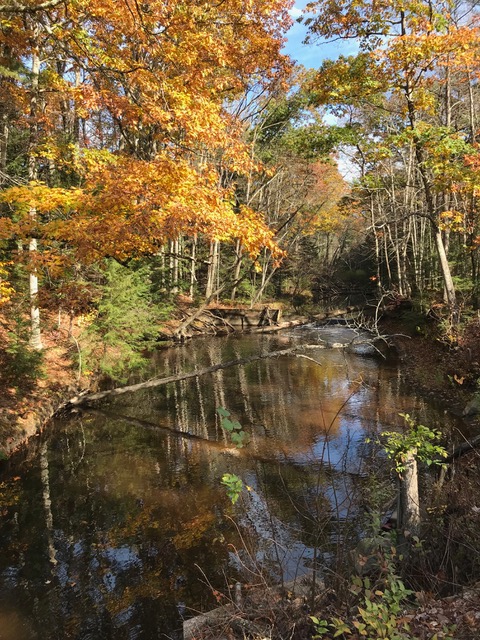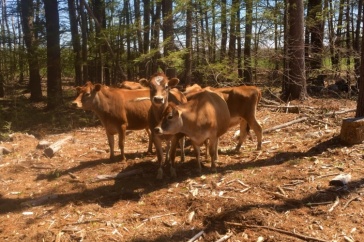
Freshwater streams and rivers naturally clean up some forms of pollution originating from urban and agricultural areas, but increased storm intensity reduces this ability, new research from UNH finds. The work, conducted in the Oyster River watershed, underscores the need to improve the management of pollution and storm water management to improve the health of the Great Bay Estuary.
The research, published recently in the journal Water Resources Research, advances efforts to further understand the ability of streams and rivers to clean watershed pollution and determine how to best manage nonpoint nitrogen inputs associated with human activity. A new generation of high-technology sensors placed directly into streams and rivers measured nitrate concentrations continuously and at high frequency under different flow conditions. These sensors are transforming the understanding of water quality and how to improve its management.
“Worldwide, people have doubled the amount of nitrogen entering the environment over the last century,” says Wilfred Wollheim, associate professor of natural resources and the environment. “A big question remains as to where all that human-introduced nitrogen goes. This work looks at part of the Oyster River watershed system — the river network — to see how much can be removed by it.”
“The Great Bay Estuary is considered nitrogen-impaired in part due to nonpoint nitrogen sources from its watersheds,” Wollheim adds. “The problem would be even worse if it were not for the fact that streams and rivers clean up some of that nitrogen pollution before it gets to the bay. It is important to protect streams and rivers so they can continue to provide this important ecosystem service.”
Nonpoint source pollution generally results from land runoff, atmospheric deposition, fertilizers, septic systems and ever-expanding road networks. It comes from diffuse sources such as agricultural land, construction sites, faulty septic systems and residential areas. As rainfall or snowmelt moves over and through the ground, it picks up and carries away natural elements and human-made pollutants, finally depositing them into streams, rivers, lakes, wetlands, coastal waters and ground waters.
Specifically, the researchers found:
- Urban and agricultural areas contribute much higher nutrient inputs to streams and rivers than forests, especially during storms.
- Freshwater ecosystems are able to clean some of this higher nutrient input before it gets to coastal areas.
- The ability of fresh waters to clean up nutrient pollution declines rapidly with larger storms.
- Improvements need to be made in nonpoint nutrient management on land by reducing inputs while taking into account different storm intensity or by increased storm water management.
“Climate scientists predict that storminess will increase in the future, associated with climate change, which means less retention by rivers. Therefore, it becomes even more important to reduce the original nitrogen sources. We need to think about whether we need to fertilize our lawn as much, make sure our septic systems are maintained, and support legislation to help reduce nutrient inputs, especially as more people move to the region” Wollheim says.
In addition to Wollheim, UNH Earth Systems Research Center researchers Gopal Mulukutla, Chris Cook and Richard Carey were co-author on the article.
This research was funded by NSF NH EPSCoR Ecosystems and Society (#EPS 1101245) and the Town of Durham/UNH facilities. Partial funding was provided by the National Sea Grant College Program of the U.S. Department of Commerce’s National Oceanic and Atmospheric Administration grant NA10OAR4170082 to the N.H. Sea Grant College Program, and by the New Hampshire Agricultural Experiment Station (NHAES) through USDA National Institute of Food and Agriculture Hatch Project 0225006. This is NHAES Scientific Contribution Number 2713.
-
Written By:
Lori Tyler Gula, PhD | NH Agricultural Experiment Station | lori.gula@unh.edu | 603-862-1452
-
Compiled By:
Beth Potier | UNH Marketing | beth.potier@unh.edu | 2-1566


















































